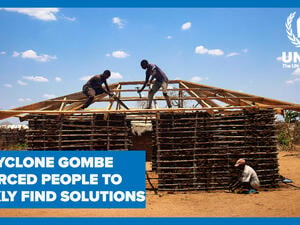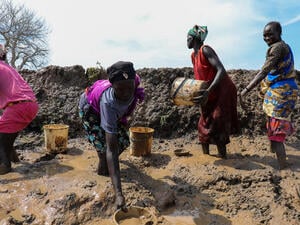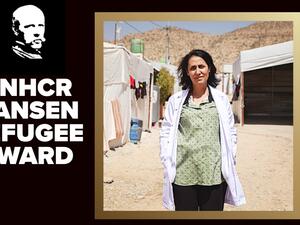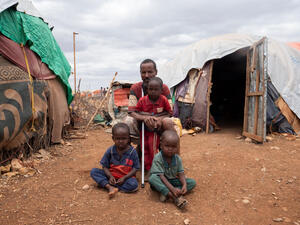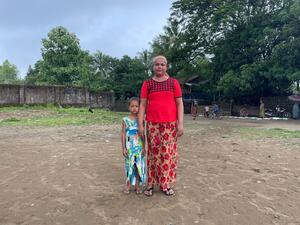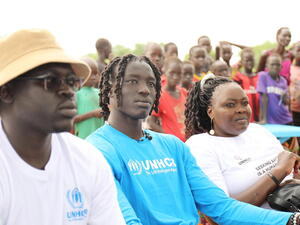Almost 70,000 South Sudanese flee homes despite early May truce
Almost 70,000 South Sudanese flee homes despite early May truce

A group of displaced women and children rest on Ethiopian territory after crossing the Baro River from South Sudan. Some 20,000 people have fled South Sudan since a ceasefire began in early May.
JUBA, South Sudan, May 27 (UNHCR) - Three weeks after South Sudan's warring rivals agreed to a truce, continuing fighting has forced almost 70,000 people to flee their homes and seek shelter elsewhere in the country or in neighbouring states.
"Since the signing of the Cessation of Hostilities Agreement on 9 May in Addis Ababa, the number of internally displaced people has grown by 46,000 people to 1,005,096," UNHCR spokesman Adrian Edwards said on Tuesday. "Over the same period, the number of South Sudanese refugees in Ethiopia, Kenya, Sudan and Uganda has swollen by over 20,000 to 370,000 people," he told journalists.
South Sudan has been mired in civil conflict for more than six months, aggravating an already dire humanitarian situation. The truce signed earlier this month was the second so far.
Ethiopia currently hosts the largest South Sudanese refugee population at more than 130,000 people, mostly women and children. Recent arrivals say they have fled fighting in neighbouring Jonglei and Upper Nile states, particularly the area around Mathiang in Longechuk county of Upper Nile. Those from other areas said they feared imminent attacks or food insecurity.
To accommodate the refugees, UNHCR and the Ethiopian authorities have opened three new camps this year, two of which (Leitchuor and Kule I) have a combined population of 95,000 refugees and are already full. The third camp, Kule II, which opened on May 17, is already hosting almost 6,000 refugees.
"With 16,500 more refugees at the border waiting to be relocated there, and an average of 1,000 South Sudanese arriving daily in Ethiopia, we have already started looking for additional land for a fourth camp," Edwards noted.
With the conflict in South Sudan having put 4 million people at risk of acute food insecurity, UNHCR is concerned at the potential for further displacement internally and into neighbouring countries over the coming weeks. South Sudan is also host to some 320,000 refugees from Sudan. Among these, UNHCR and its partners are also worried about food shortages, particularly those in the Maban area of Upper Nile.
Currently, across South Sudan, many people are unable to farm, to access their normal food sources, or to migrate with their livestock. An added challenge for those hoping to flee areas of fighting is that roads and river crossings are becoming impassable because of the rainy season.
"UNHCR thanks donors for the $US600 million pledged last week in Oslo towards UN humanitarian operations aimed at alleviating the plight of forcibly displaced South Sudanese. This includes operations inside South Sudan, as well as the four countries hosting South Sudanese refugees," Edwards said.

